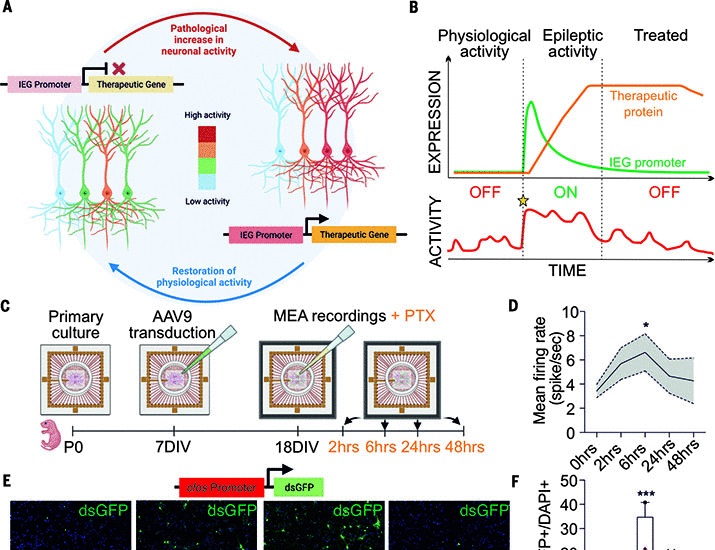In a recent study, researchers from University College London have developed a new approach to treating neurological and psychiatric disorders that works by reducing the neuronal firing of overactive brain cells. The findings are published in the Nov. 4, 2022 issue of Science with the title “On-demand cell-autonomous gene therapy for brain circuit disorders”.

Many brain disorders, such as epilepsy, are caused by the overactivity of a few brain cells. These disorders often do not respond well to drug therapy, primarily because the drugs used may affect the entire brain. While gene therapy may be a promising class of treatment for these disorders, an obstacle hinders the current application that such methods do not distinguish between overactive and normal brain cells.
However, in this new study, these authors developed a new approach using a technique that alters only the overactive brain cells while not affecting those that act normally.
The researchers have invented a new gene therapy that works by turning on only the overactive brain cells and turning themselves off if they return to normal. They harnessed the ability of certain DNA sequences to control gene expression in response to metabolic signals. By redirecting this active-sensing mechanism to drive the production of molecules that block brain cell firing, they found that seizures could be suppressed.
To develop this new gene therapy, these authors screened several genes known to be activated in response to stimuli, and coupled their promoters to potassium channels selected for their ability to reduce nerve cell firing. This promoter-potassium channel combination was tested in mice and in miniature brain-like structures (i.e., brain-like organs) cultured in Petri dishes, which are made from skin-derived human stem cells.
They found that the combined use of the immediate early gene c-Fos promoter with the KCNA1 potassium channel gene was shown to be highly effective in suppressing neuronal firing after induction of seizures and also in suppressing spontaneous seizures without any negative impact on cognitive performance.
This new treatment was more effective than gene therapy or antiepileptic drugs previously tested in the same model, resulting in an approximately 80% reduction in spontaneous seizures in epileptic mice. These authors claimed that this new gene therapy could eventually be used theoretically to treat some other diseases with overactive brain cells.
Professor Dimitri Kullmann from the Queen Square Institute of Neurology at University College London, a co-corresponding author of the paper, said that their findings suggest that brain cell overactivity can be restored to normal, and that this new approach could be used to treat important neuropsychiatric disorders that do not always respond to drugs. This new gene therapy is self-regulating and can therefore be used without predetermining which brain cells need to be targeted. Importantly, in principle, it may be extended to many other disorders where some overactive brain circuits are present, such as Parkinson’s disease, schizophrenia, and pain disorders.
Reference
1. Qiu, Yichen, et al. “On-demand cell-autonomous gene therapy for brain circuit disorders.” Science 378.6619 (2022): 523-532.
